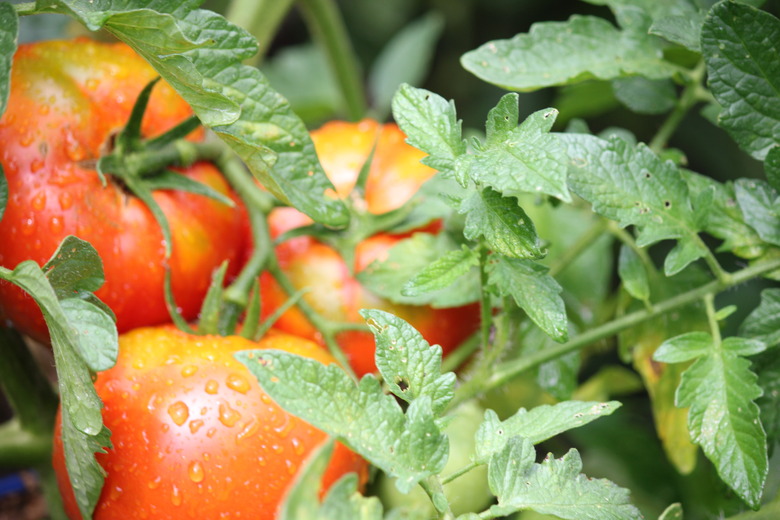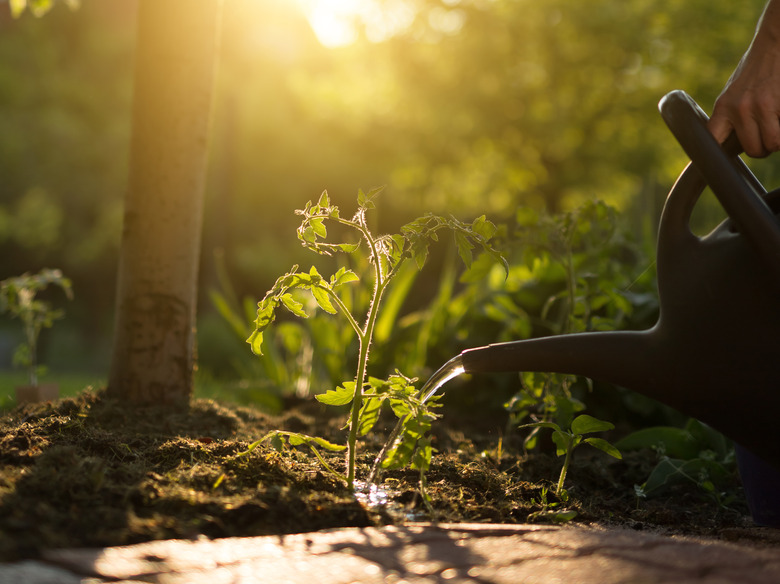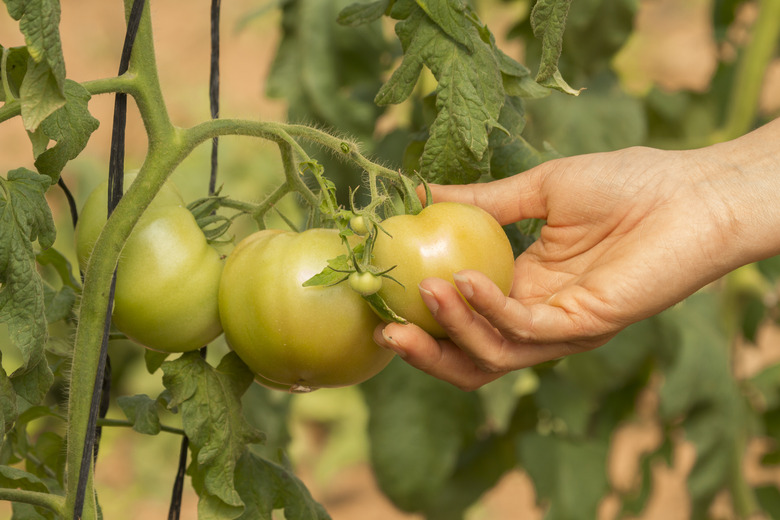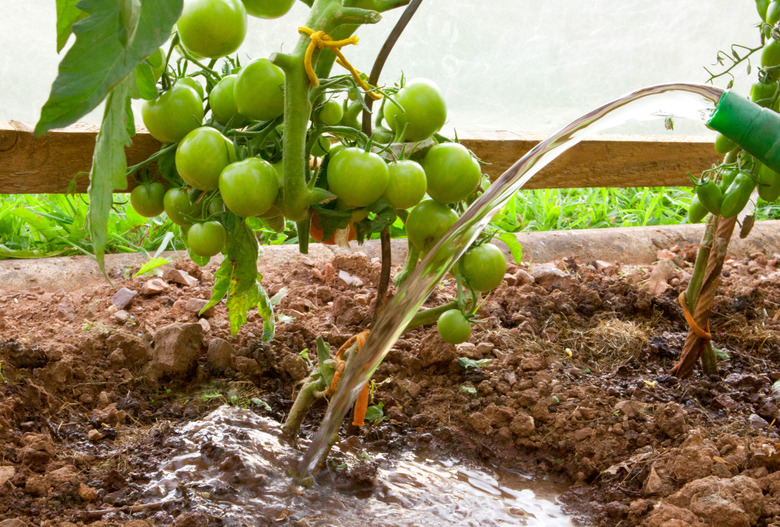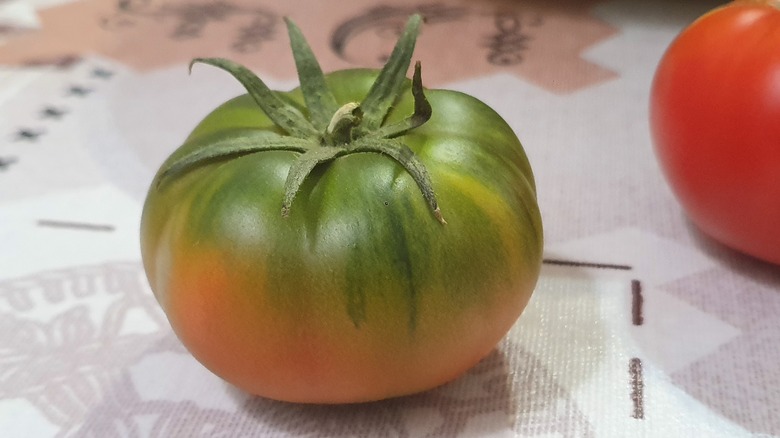Can I Save My Tomato Plants After A Frost?
Tomatoes (Lycopersicon esculentum) are tender plants that can't withstand a heavy frost, but slightly frosted plants may recover. Usually grown as annual plants, tomatoes can grow year round in U.S. Department of Agriculture plant hardiness zones 10 through 11. At temperatures of 40 degrees Fahrenheit and lower, tomato plant leaves, stems and fruits suffer damage, but you can help save the plants by protecting them from further frosts.
Saving Young Plants
Young tomato plants are especially vulnerable to cold weather. Signs of frost damage include soft and discolored stems and leaves, and sunken leaf spots that are tan to brown. The spots usually appear between leaf veins. If the damage isn't extensive — meaning it only affects the leaves' outer edges for example — the plants will probably recover. Move the plants to a frost-free area if they're in containers, and cover the plants in the ground with sheets of fabric if you know more frost is on the way. If the stems below the lowest leaves are discolored and soft, then little hope exists for the plants. Discard them and immediately sow or buy new tomato plants for a crop that year.
Rescuing Mature Plants
You may be able to save mature tomato plants that suffered a late frost. The average annual last frost date is only a rough guide for when to expect the late frost, and sometimes late spring or early summer frosts catch gardeners by surprise. If your mature tomato plants have frost damage, inspect them carefully. Those that have collapsed completely can't be saved. If, however, your mature plants are still standing, tidy them by removing their frost-damaged leaves. Pinch or prune them at the nearest point where healthy tissue begins. Wipe the blades of the pruning shears in rubbing alcohol before and after pruning to help prevent the spread of pests and diseases.
Protecting Them from Frosts
If your tomato plants survived a light frost, keep an eye on the weather forecast and protect them the next time frost is expected. Water the tomato plants' soil the evening before a frost, and cover the plants with newspapers, old bedsheets, fabric tarps, floating row covers, or a similar material before the sun sets. Spread the material over the tomato plants' stakes, and don't allow the material to touch the plants (touching reduces the level of frost protection). To protect young tomato plants, you can wash and cut the tops off plastic milk containers and place them over the plants before the night's frost. Remove the containers the following morning when the frost has thawed; doing so will prevent the young plants from heating in the sun's rays.
Harvesting Tomatoes After a Frost
The growing season for tomato plants is a few short months in some areas of the United States, but you can harvest tomato fruits up to — and just after — the first fall frost. Tomato plants produce best when daytime temperatures are 70 to 75 degrees Fahrenheit during the day and 65 to 68 degrees Fahrenheit at night. At temperatures below 60 degrees Fahrenheit, production slows or stops, and the plants don't grow or produce when temperatures are cold enough to develop frosts.
After the first fall frost, harvest all the fruits. You can cut off all frost-damaged parts and eat the undamaged portions fresh. What to do with undamaged green fruit? You'll find lots of recipes that call for green tomatoes — or allow them to ripen. Green tomatoes will ripen when spread in a single layer in a dark, airy location where the temperature doesn't fall below 55 degrees Fahrenheit. Fruits from a frost-damaged tomato plant shouldn't be canned because they may be unsafe.
